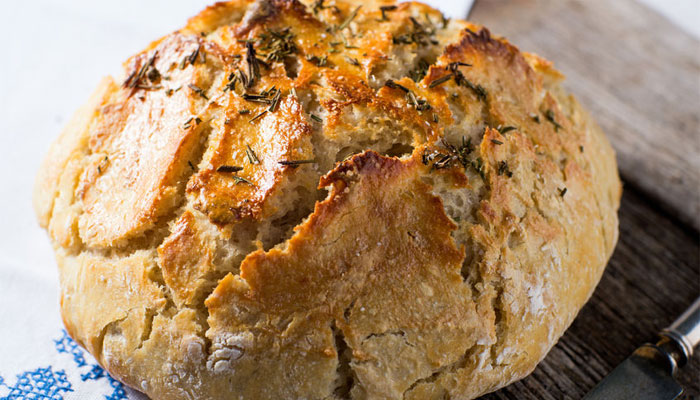
Bread is considered an absolute staple by many people. If you have bread you have life, but first you must know how to make bread. There are a number of ways of making camp bread, and some of it may turn out pretty good, while sometimes, you end up with a burnt pile of dough that is unrecognizable as bread, which is not very appetizing. Baking bread is not that hard if you follow a few basic rules, have the right tools and equipment, and take the time to do it right.
The following is a basic white bread recipe, but keep in mind nothing is set in stone. You can substitute milk for water, use lard or butter instead of cooking oil, add honey instead of sugar and you can even add raisins, cranberries or even nuts to any bread recipe.
- 1 package (1/4 ounce) active dry yeast
- 2-1/4 cups warm water (110° to 115°)
- 3 tablespoons sugar
- 1 tablespoon salt
- 2 tablespoons cooking oil
- 6 to 6 1/2 cups all-purpose flour or bread flour ( some of the flour is used for dusting, and adding more to the dough so make sure to set aside a cup plus)
Expert bakers will tell you to activate your yeast in warm water before using, however, if all of your tools and bowls are at room temperature you can probably add the yeast, along with all of your other ingredients except for the water or milk.
Your water or milk should be at 110-115 degrees to activate the yeast, however. Once all ingredients are combined, including the warmed liquid, mix the dough well and add additional flour as needed a little at a time until it forms a soft ball that is not sticking to your hands.
Turn out onto a dusted surface and knead for 10 minutes or so adding flour as needed to keep the dough from sticking to your hands and surface. Set aside and allow it to double in size.
You can put the dough in your Dutch oven and set in the sun to rise to save some steps. Normally dough would rise in a bowl and then it is divided in half for loaf pans. You are cooking the entire batch in your Dutch oven, however. Coat the bottom and sides with oil or lard and sprinkle a thin layer of cornmeal on the bottom to help keep the bread from sticking, and the meal will absorb some of the heat to help prevent burning.
The hardest part of baking with a Dutch oven over coals is regulating the heat. Most Dutch oven cookbooks will tell you how many briquettes you will need on top to maintain a certain temperature and how many to have under the bottom. This is fine, except you may be using hardwood chunks, and not all briquettes are created equal, and then some people use lump charcoal. It takes some practice, but you don’t want to ruin your bread the first time either. Typically, the bread burns on the bottom and is undercooked in the middle and the top is not browned.
You will need a Dutch oven that has a lid that you can pile hot coals on. In a pinch, you can invert the lid and pile coals in the depression, but getting the lid back off is a chore. It is best to start out with the right Dutch oven and have what you need on hand to succeed.
Ideally, you would have two or more Dutch ovens of different sizes. You can stack a 10-inch oven on top of a 12-inch oven, for example. You can bake bread in the top oven while making stew or chili in the bottom one. The hot coals on top of the 12-inch oven serve to heat the bottom of the 10-inch oven, which would have coals on top of it.
To have it bake right each time, you need consistent heat on top and bottom, and typically, you would want more heat on the top for bread baking. Once the oven is set on the coals, you would rotate the oven one-quarter turn after the first 15 or 20 minutes. Depending on how hot your oven is it can take 30-40 minutes of baking time. Bread will create steam so be careful when removing the lid.